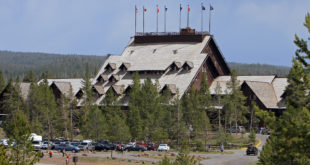In the judge’s 40 page ruling, the key issue was sustainability of the species. In 2002 the U.S. Fish and Wildlife Service (FWS) had maintained that it was necessary for genetic viability that breeding occur between the three geographically separated groups of wolves (one group in central Idaho, one in Northwestern Montana, and the other in the Greater Yellowstone Region mostly in Wyoming). In the judge’s opinion the decision to delist the wolf did not show how this interbreeding would occur and was, in fact, based on the same data from 2002 from which the FWS concluded interbreeding was necessary. The judge added that the scheduled wolf hunting would further reduce the possibility of interbreeding, as well as seriously reduce the base wolf population. The judge’s ruling is a preliminary injunction. This means that:
1. The trial will continue, with both the government and the suing environmental groups able to further their arguments.
2. At the end of this trial the judge will issue a final ruling;
3. between now and the final ruling, the de-listing of the wolf is rescinded;
4. the judge’s preliminary injunction is subject to appeal to a higher court (Ninth District Circuit Court of Appeals).
All of which means that the legal hunting of wolves and the issue of delisting the wolves is on hold for at least a year. It was clear from the judge’s remarks that he considered the government’s case seriously flawed, which puts the burden of shoring up the arguments for delisting in the next round of the trial on the FWS. In a previous case, Judge Molloy declined to prohibit the delisting of grizzly bears in the Greater Yellowstone Ecosystem.
The battle over re-introduction of the gray wolf into the Rocky Mountains has been going on for over two decades. Although the venue changes, the controversy shows little sign of abating. As wolf populations increase, their interaction with people and predation of livestock increases. In the West, this is guaranteed to raise issues of human safety, availability of game for hunting, and ranch survival. The current northern Rocky Mountain wolf population has grown from a few dozen (imported from Canada) to an estimated 2,000 – about half the number of wolves in northern Minnesota.
Comments about the ruling predictably reached a high level of faux-clever invective from both sides (“if they can’t sell tags for wolves now, maybe they could start selling judge tags and start with molloy”, “if they want to make know-nothing comments, then morons they are”). Responses from the governors of Idaho and Wyoming were more diplomatic, but not much less critical. Few issues have a higher or more emotional profile in the West, and the wolf controversy tends to reverberate up and down the political spectrum. The judge’s preliminary injunction will increase the volatility of the issue, and highlights the relatively fuzzy state of statistics about wolves and wolf behavior.
 Yellowstone Insider Your Complete Guide to America's First National Park
Yellowstone Insider Your Complete Guide to America's First National Park





